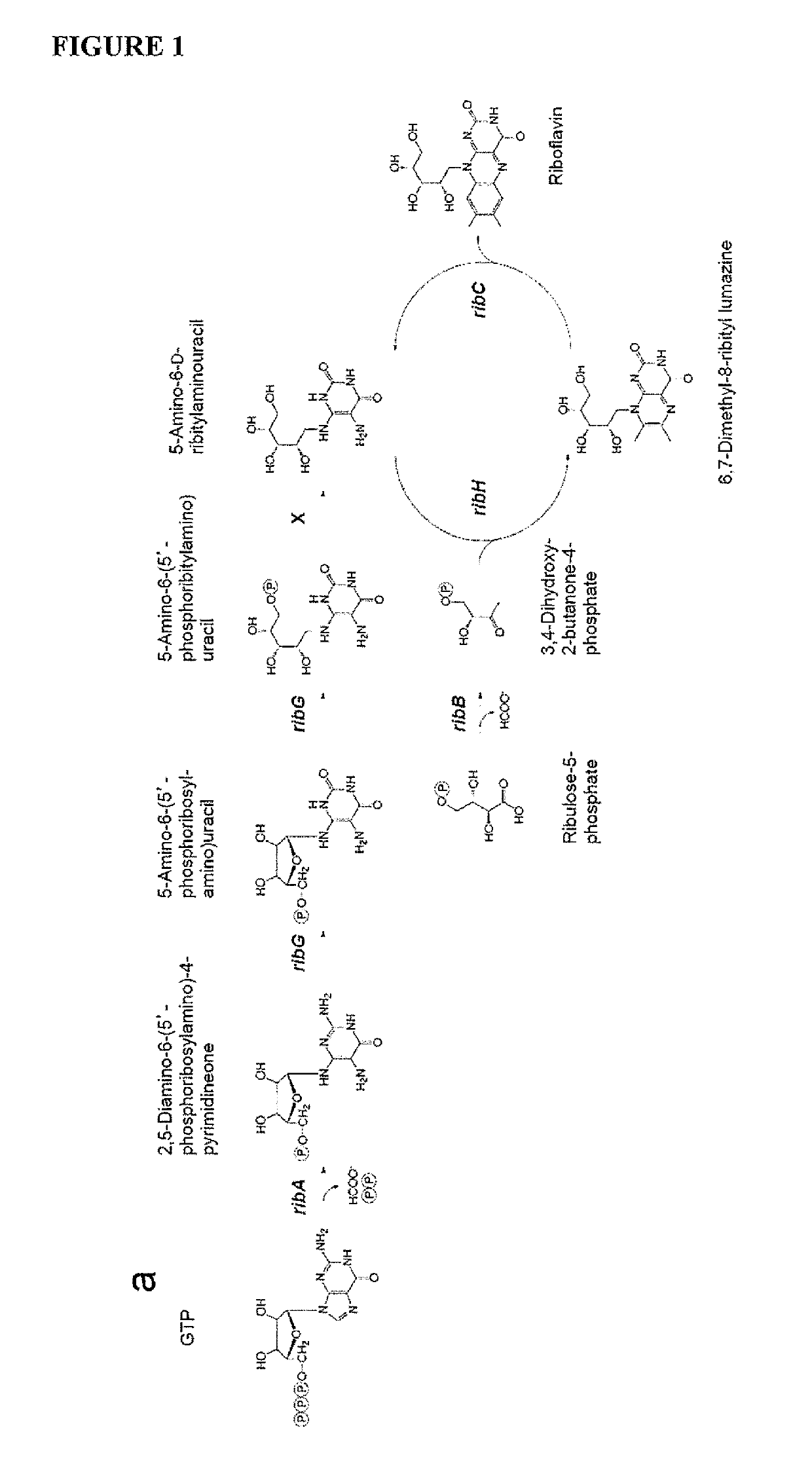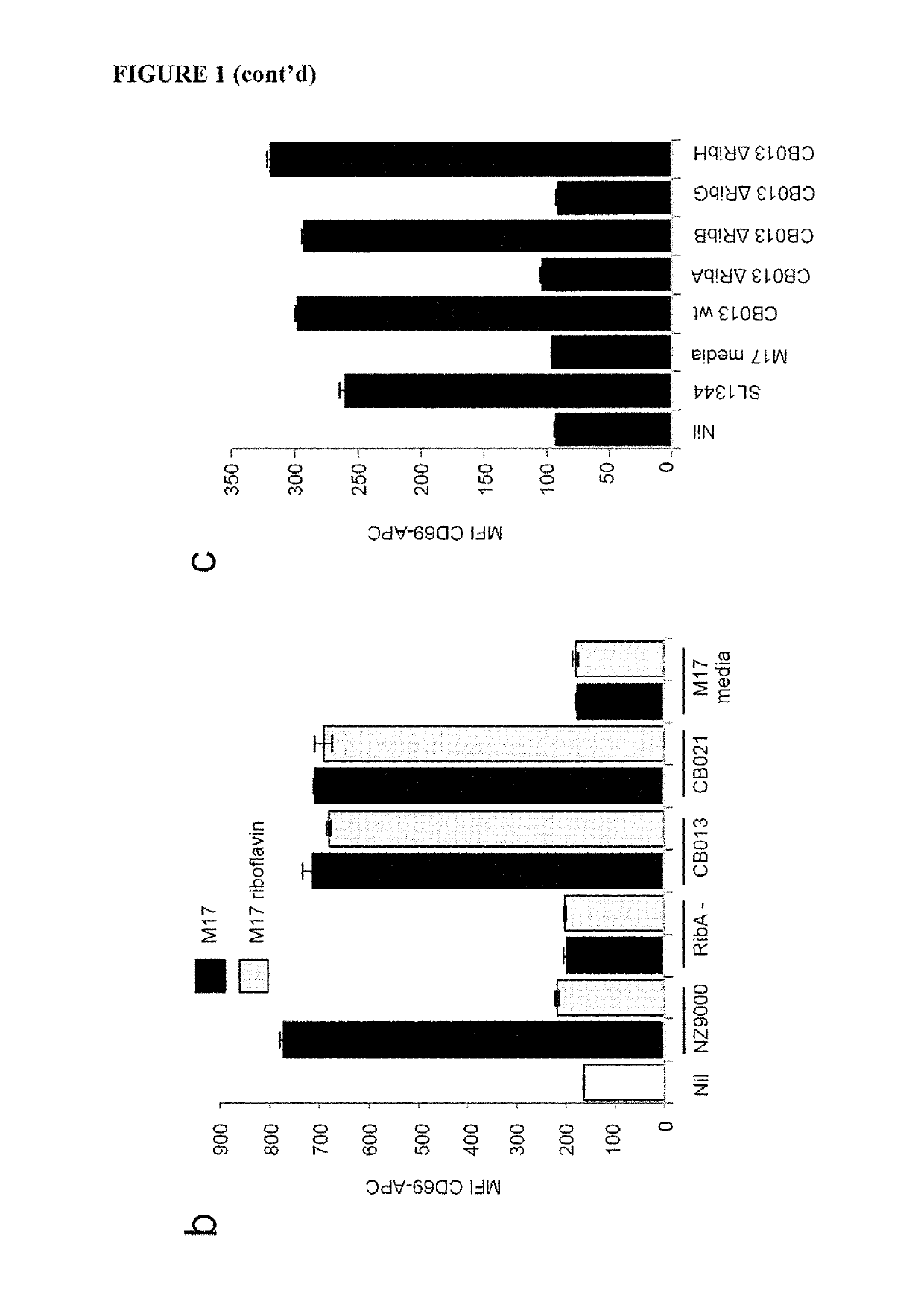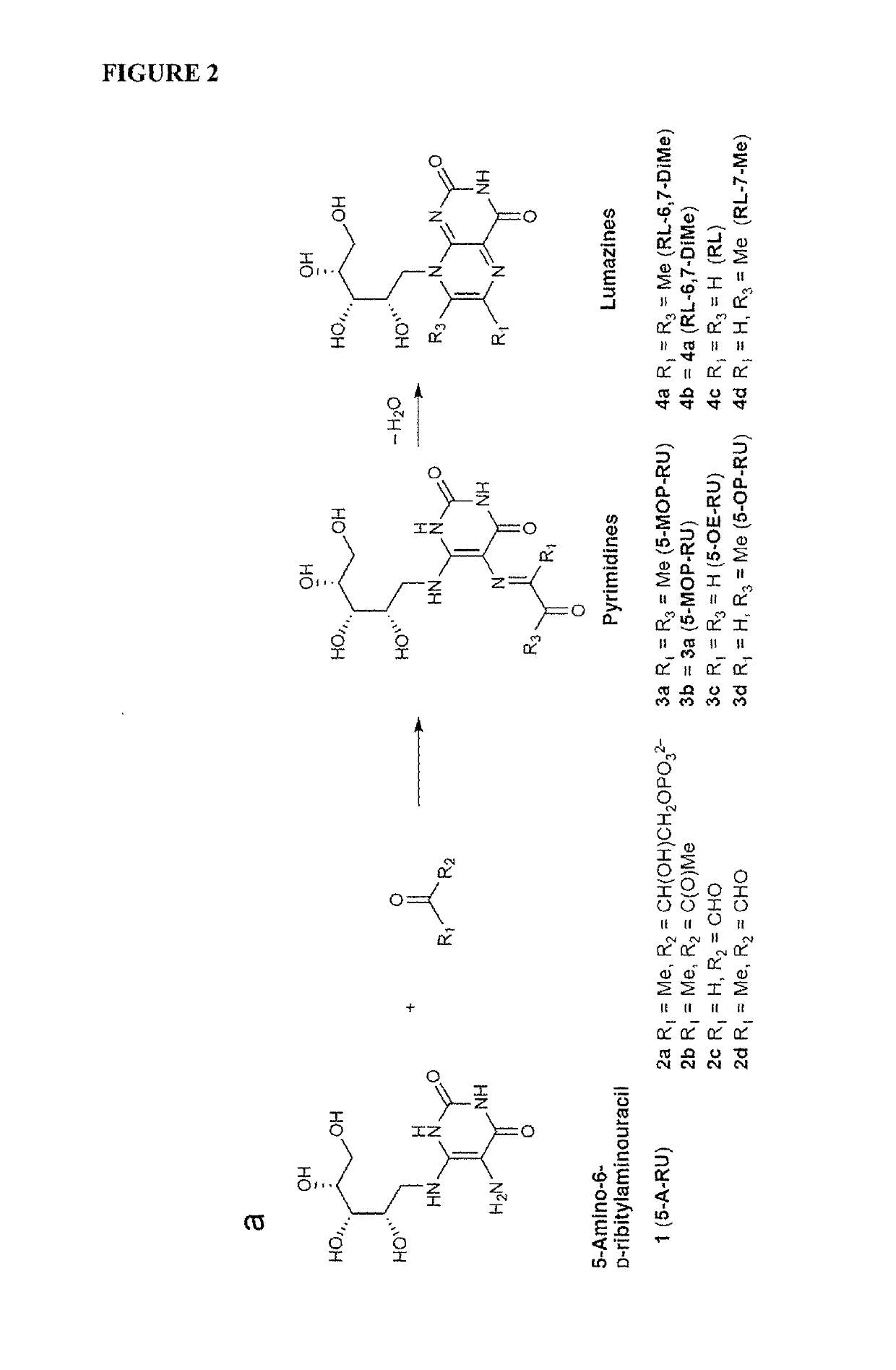Immunological reagents and uses therefor
a technology of immunological reagents and reagents, which is applied in the field of immunological reagents and uses therefor, can solve the problems of difficult to precisely identify mait cells in mice, the current method reliant entirely on a v 7.2 phenotype and the monitoring and identification of mait cells by current techniques is subject to a significant ‘false positive’
- Summary
- Abstract
- Description
- Claims
- Application Information
AI Technical Summary
Benefits of technology
Problems solved by technology
Method used
Image
Examples
example 1
[0386]MAIT cell antigens were previously identified from Salmonella typhimurium (strain SL1344) supernatant (Kjer-Nielsen L. et al (2012)). Negative mode electrospray ionization-time-of-flight mass spectrometry (ESI-TOF-MS) analysis of MR1-bound ligands from S. typhimurium revealed a ligand with a mass to charge (m / z) ratio of 329.11, matching a potent MAIT activating ligand identified during the chemical synthesis of reduced 6-hydroxymethyl-8-D-ribityllumazine (rRL-6-CH2OH) (Kjer-Nielsen L. et al (2012)). While this ligand was identified biochemically, its origin was puzzling, as it is not described in the riboflavin synthesis pathway. A genetic approach was taken to evaluate if the riboflavin pathway supplied the MAIT cell ligands.
[0387]The capacity of bacterial mutants of the riboflavin pathway to activate MAIT cells (FIG. 1a) was examined. In some bacterial species, including Lactococcus lactis, the genes necessary for riboflavin synthesis are grouped together in a single 4-gene...
example 2
[0395]MAIT cell detection in histological sections (using mAb D5, which co staining with tetramer shown in Reantragoon et al (2013) shows identifies MAIT cells) shows a correlation between MAIT cell numbers and helicobacter infection in human gastric biopsies (obtained through collaboration with Andy Giraud, MCRI) (FIG. 14).
[0396]FIG. 15 shows that Helicobacter pylori culture s / n activates Jurkat. MAIT reporter cells in vitro. The effect was MR1 dependent and specific to cells expressing MAIT TCR and not an irrelevant control TCR.
[0397]MR1-5-OP-RU tetramers can be used to detect MAIT cells in many organs of wt mice (FIG. 16). These are at low numbers in wild-type mice (and much greater numbers in Tg mice, not shown).
[0398]FIG. 17 shows MAIT cells accumulate in stomachs of H. Pylori infected mice. (only in 20% of mice—similar to development of gastritis in infected humans, which is only in about 20% of people)
[0399]FIG. 18 shows MAIT Tg mice (more MAIT cells) have greater pathology f...
PUM
| Property | Measurement | Unit |
|---|---|---|
| pH | aaaaa | aaaaa |
| pH | aaaaa | aaaaa |
| pH | aaaaa | aaaaa |
Abstract
Description
Claims
Application Information
 Login to View More
Login to View More - R&D
- Intellectual Property
- Life Sciences
- Materials
- Tech Scout
- Unparalleled Data Quality
- Higher Quality Content
- 60% Fewer Hallucinations
Browse by: Latest US Patents, China's latest patents, Technical Efficacy Thesaurus, Application Domain, Technology Topic, Popular Technical Reports.
© 2025 PatSnap. All rights reserved.Legal|Privacy policy|Modern Slavery Act Transparency Statement|Sitemap|About US| Contact US: help@patsnap.com



